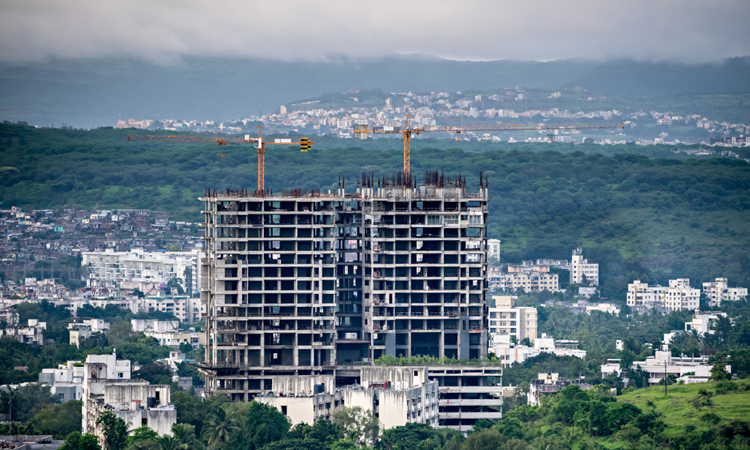A day after the Narendra Modi government announced a Rs 25,000-crore financial package to lay the foundations for the revival of the stress-ridden real estate sector, confusion prevailed over how the corpus would be put together and how the money would be disbursed from a special window.
The finance ministry came out with an FAQ (frequently asked questions) to explain the plan’s nuances but it was thin on specifics and left many questions unanswered.
The big question was how the stressed housing projects would be selected as beneficiaries under the scheme in the absence of clearly defined terms. The real estate business was on Thursday grappling with the semantic differences between a “stalled project” — which falls within the scheme’s ambit — and a delayed one.
Under the plan, the Centre will provide Rs 10,000 crore and the remaining Rs 15,000 crore will come from the Life Insurance Corporation, State Bank of India and a clutch of sovereign and pension funds.
State Bank officials said in Mumbai that the bank would fork out only Rs 2,500 crore, or 10 per cent of the corpus. There was no word from LIC on the extent of its contribution. Nor did anyone know which sovereign funds and pension funds had been approached to chip in.
That meant that the envisioned glut of housing stock — the scheme aims to kick-start the construction of 5.76 lakh residential units — is unlikely to emerge, at least in the near future. As a result, no one was prepared to hazard a view on the trajectory of property prices in the top metros, assuming a burst of housing stock floods the market.
Since it wasn’t clear how the government would sieve delayed projects from stalled ones, different agencies gave varying estimates of the residential units that would benefit under the scheme.
The hair-splitting becomes apparent in the estimate that Anarock Property Consultants has thrown up. It reckons that there are over 19 lakh under-construction homes in India but only 5.76 lakh units can be designated as stalled, including 13,000 units in Calcutta.
It based its calculation on a simple parameter: these units were launched on or before 2013 and it usually ought not to take more than five years to complete them.
However, the government itself has pegged the number of stalled units at 4.58 lakh units across India. Many developers that The Telegraph spoke to in Calcutta took pains to point out they had projects that were delayed but not stalled.
“Some of our projects may be behind schedule a bit but none of them are stuck,” said Sanjay Jhunjhunwala, managing director of the Mani Group. The same response was received from the Ideal Group.
Harsha Sodhani, senior analyst with India Ratings & Research, a Fitch Group company, said the investment manager handling the fund corpus would have to take a call on which projects qualified for funding.
“We have a feeling they would lay down criteria based on financial viability and the return on investments, among other factors, once there is clarity on the funding from institutions. This process could take three to six months,” Sodhani said.
The Ind-Ra note said a corpus of Rs 25,000 crore could bring on stream roughly 30 crore square feet of built-up space over the next two to three years.
The rating agency assumed Rs 2,500 per square foot as the cost of construction and only 30 per cent as the last-mile funding requirement to complete the stalled projects to arrive at its estimate.
While acknowledging that the rescue package would provide relief to harried homebuyers who have been left in the lurch for several years, the note added: “With stalled projects coming on stream, the demand-supply imbalance is likely to worsen and, if the overall housing demand does not witness a recovery, pricing pressure in the sector is likely to be exacerbated.”
A back-of-the-envelope calculation shows that 300,000 new units may be completed with the fund, assuming they have a built-up area of 1,000sqft.
In Bengal, there is another legal hurdle that homebuyers of stalled projects may have to encounter.
The Modi government has said only projects registered under the Real Estate Regulatory Authority (Rera) will be eligible for funds from the special window. The Mamata Banerjee government in Bengal had notified its own act, which is broadly modelled on the central act but the regulator it establishes is called the West Bengal Housing Industry Regulatory Authority (WBHIRA).
According to the HIRA website, 640 projects are registered under it. Of these, 551 are ongoing while the completion dates for the rest have passed. But it is unclear how many of them have reached completion.
“We are seeking legal opinion on whether Bengal projects will qualify under this scheme,” a city-based developer said.
A lawyer who advises many realtors said HIRA-registered projects should also get the benefit because the state law is modelled on the central act, but wondered whether politics would ultimately trump policy initiative. “My answer is no,” he said.










